I have looked through various posts related to this problem, but none provide an answer. I created a .Net 5.0 app that accesses an Azure SQL DB using EF 6.4.4 which works with .Net standard libraries. I modified the EF by adding a function that creates the connection string from appsettings.json since .Net 5 apps don't use a web.config file. This also works well in Azure with the configuration settings in an app service.
The connection string looks like this:
metadata=res://*/EF.myDB.csdl|res://*/EF.myDB.ssdl|res://*/EF.myDB.msl;provider=System.Data.SqlClient;provider connection string='Data Source=tcp:mydb.database.windows.net,1433;Initial Catalog=myDB;Integrated Security=False;Persist Security Info=False;User ID=myuserid@mydb;Password="password";MultipleActiveResultSets=True;Connect Timeout=120;Encrypt=True;TrustServerCertificate=True'
I also have a deployment pipeline that will deploy the code after a check-in instead of using the Visual Studio publish feature, but the pipeline deployed code has the same problem.
When I first created the app and published it to the app service, it worked. Recently I updated the app with no changes to the EF connection. Now I get the "Invalid Object name when I reference any table in the model. If I run the same code locally and connect to the Azure SQL DB, the DB is accessed as expected. This problem only occurs when running in the Azure app service. Note that there are no connection strings configured for the app service since the EF string is built from the config settings. I saw this post, but I don't think it applies:
Local works. Azure give error: Invalid object name 'dbo.AspNetUsers'. Why?
even though the problem is the same. I have also read various posts about the format of the EF connection string. Since my model is database first, (and the connection used to work), I'm confident the string has the correct format. I don't think the problem is in the code since it works when running locally with a connection to the Azure SQL DB. It must have something to do with the Azure app service configuration, but I'm not sure what to look for at this point. Unfortunately I don't have a copy of the code and publish files that did work to compare to, but it the pipeline build doesn't work either and that it how the code would normally be deployed. Thanks for any insight you might have!
